If you’re alive and kicking today and in tune even just a little bit with the craft world in general, you’ve probably noticed the coloring book trend. It’s been going on for a while, and although the market is pretty well saturated with “adult coloring books,” I’m thinking the trend will probably continue.
For embroiderers, the explosion of whimsical and diverse coloring books available today offers a different approach to their use. Coloring book designs can be easily adapted to embroidery designs. For example, I’ve done so here with this hummingbird coloring book page from one of Jahanna Basford’s books.
As long as you’ve bought the book and you’re using the designs for personal use (you’re not reproducing and selling them, or selling items made with the designs embroidered), then you’re perfectly allowed to adapt a design to stitch rather than color.
For those more specifically interested in designs that are textile related, and for William Morris lovers in general, there’s a nice design resource to be found in a beautiful William Morris coloring book that I want to show you today. This was a birthday gift from my sister earlier this year. She knows me well!
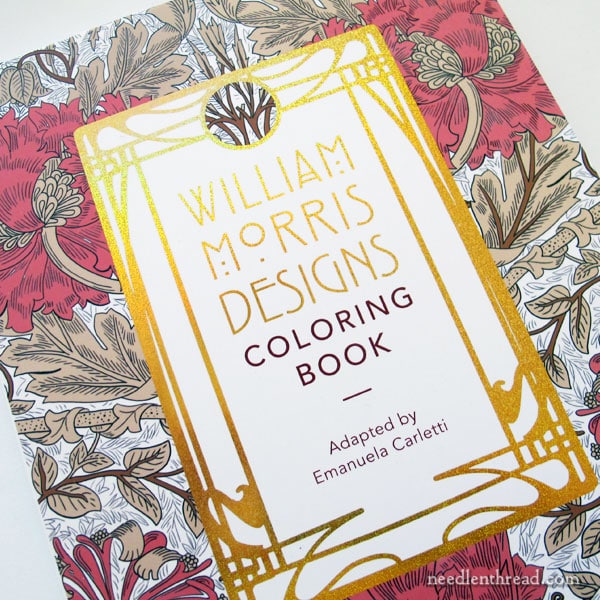
There’s not a whole lot to say when reviewing a coloring book! But this one does have a few unique features that makes it even more suitable for needleworkers who: 1. are seeking designs to interpret; 2. are interested in historical needlework; 3. like to have color suggestions.
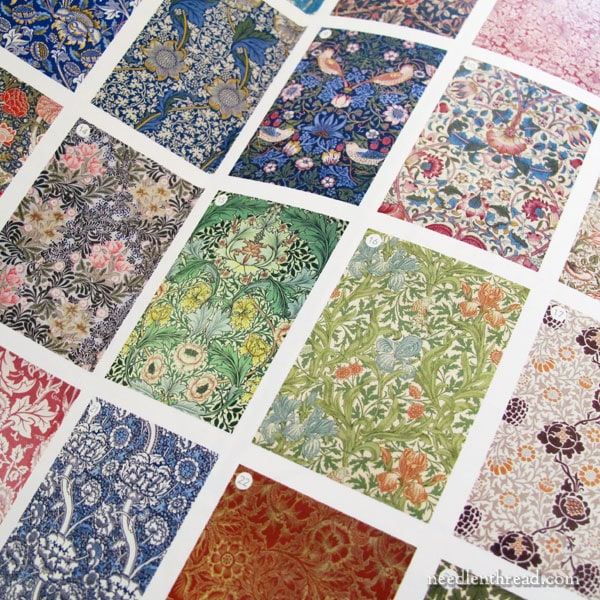
In the front of the book, there are beautiful color plates of each design, interpreted in colors a la William Morris.
And while you might not want to embroider an entire plate in this collection, if you were to extract elements, you’d have a nice guide for colors even for small designs.
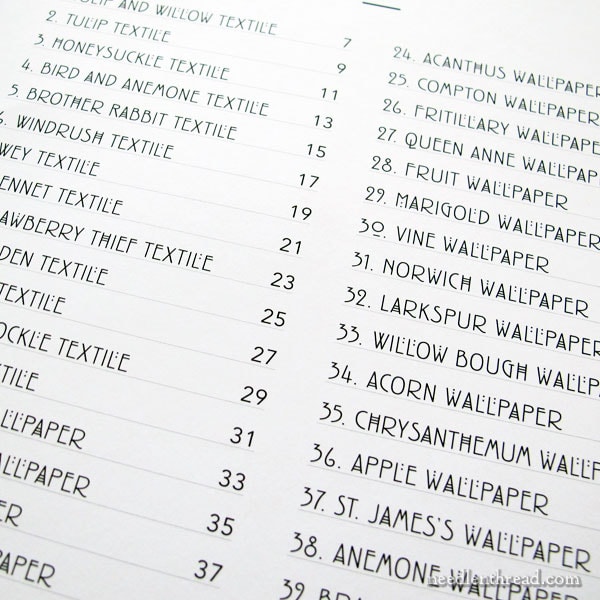
And there are a lot of design plates in this book!
(The more the merrier!)
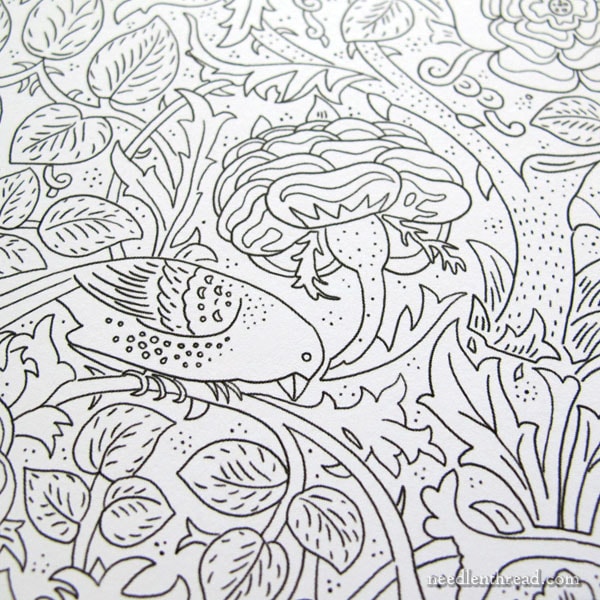
Like any coloring book, the designs are presented in nice, clean line drawings.
If you were drawn to the plate above, would you stitch the whole thing, or would you extract an element or two?
One aspect that I love about William Morris is that his designs were downright lush. They exude nature (albeit somewhat stylized).
I really like the image above, and I could see approaching it by combining a monochromatic palette for much of the background, done in simple, low-key, low contrast line stitching. Then, I’d pick up just a few of the main elements – the bird, the flower, and a few leaves, and deck them out in fully embroidered color.
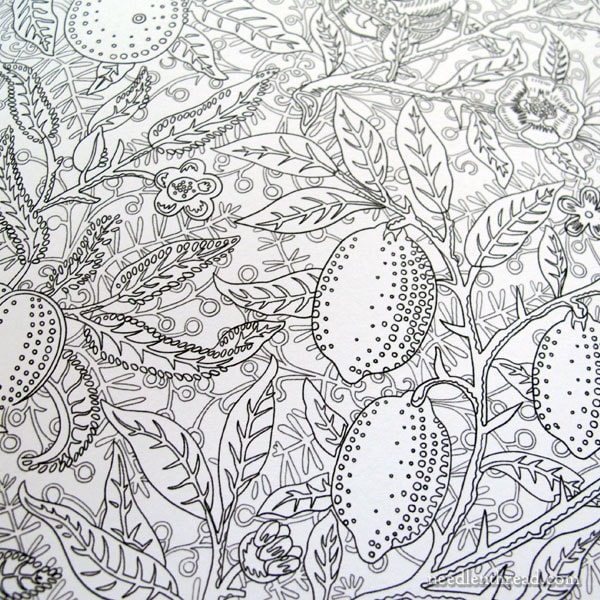
I’d do the same thing here, and the lemons would get a high-impact treatment. And I’d go summery bright and modern!
It’s a fun book, and a wonderful resource for design ideas for embroidery.
If you like the idea of adapting Morris designs for stitching, there are plenty of other William Morris-related coloring books out there, too. I’ve acquired a few over the years, but this one really stands out for me. Is it because my sister thought of me when she saw it? Or is it because I really like the design selections and adaptations?
I suspect it’s a combination of both, but if I took her out of the equation, I still think this particular book would still be the best Morris coloring book I’ve come across so far.
Where to Find It
You can find William Morris Designs Coloring Book with designs adapted by Emanuela Carletti available through the following affiliate book sources:
In the US, it’s available on Amazon. You’ll find it listed at the top of my Amazon page here, where you can find a good smattering of my favorite needlework books available.
Worldwide with free shipping, you’ll find it available here through Book Depository.
On Needle ‘n Thread, you will find my Privacy Policy & Disclosure information available here. The link is at the end of the left column on the main website, but you may not have noticed it. I’ve updated the page recently if you are interested in it.